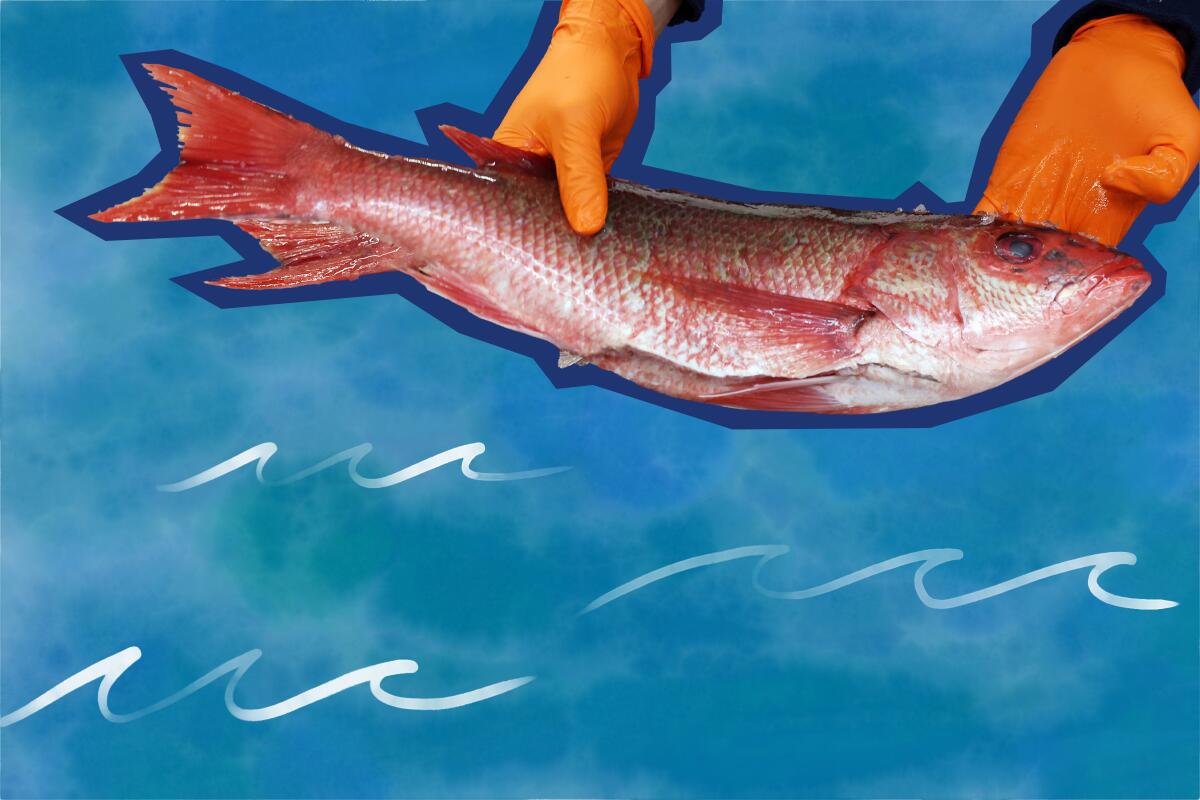Op-Ed: Making blue foods central to global food systems

- Share via
A friend used to tell me “something’s a-fish” when things were off kilter. Today, the global food system is not just “a-fish”; it’s failing billions of people.
Hunger, malnutrition and obesity coexist in rich and poor countries alike, often in the same town or even in the same home. Diabetes, heart disease, coastal dead zones and other social burdens connected to our food system continue to rise. In recognition of this urgent challenge, the United Nations will hold a global summit in September for government, business, nonprofit organizations and civil society leaders to map a more sustainable, healthy and equitable food system.
Transforming our food system will require a new mind-set and more careful consideration of blue foods — aquatic animals, plants and algae cultivated and captured in freshwater and marine environments.
Until now, the movement to build productive and sustainable food systems has focused on transforming land-based crops and livestock, largely overlooking the critical role that fish and other aquatic foods play in nutrition, livelihoods and ecosystems around the world. That role will increase as food production becomes increasingly vulnerable to climate change.
Over the last half-century, policymakers and business leaders have given priority to efficiency and scale by supporting major crop and livestock farmers, reducing food prices for consumers and expanding market opportunities. Blue foods, by contrast, represent a large and complex group that defies similar strategies.
More than 3,000 species of fish, shellfish, plants and algae are produced globally in a wide array of ecosystems with different technologies at multiple scales. These include, for example, ocean tuna cages in Australia, lines of seaweed and bivalves along China’s coastline, and freshwater catfish ponds in Vietnam, Nigeria and the U.S. Blue foods provide protein and micronutrients that help prevent maternal and infant mortality, stunting and cognitive deficits. They also offer healthy fats that help reduce obesity and metabolic diseases such as diabetes and heart disease.
In many cases, they produce lower greenhouse gas emissions and environmental effects than industrial livestock. The Blue Food Assessment, led by Stanford University and the Stockholm Resilience Center, is an international initiative working to identify and fill in gaps in understanding of the role of aquatic foods in global food systems now and in the future.
The diversity of blue foods should be embraced as an opportunity, not an impediment, for improving food and nutrition security. In Bangladesh, the view from a plane shows a landscape of small freshwater and brackish ponds filled with an array of fish and aquatic plants. These aquaculture operations are biologically diverse treasure chests and critically important food sources for rural and urban communities.
Similarly, the African Great Lakes region produces huge volumes of affordable, micronutrient-rich fish that are traded and consumed throughout the region. In the fish market of Kisumu in Kenya’s Western Province, I observed tables piled high with small fish sold for soups, and counters with tilapia from three sources — farmed in regional aquaculture ponds, captured wild from Lake Victoria and imported from China — all at different price points and quality for the local consumer. These fish, and many others I did not recognize, were sold readily, and served in small portions alongside vegetables and starches. The locals view fish as “rich food for poor people.”
Blue foods, of course, are rich food for all people, with global consumer demand rising. Since wild fish catch and aquaculture production vary widely by region, trade in seafood has become a booming international business. According to data by the United Nations’ Food and Agricultural Organization, seafood trade has roughly doubled in volume and value in recent decades. Fish are now among the most highly traded commodities in the global food system, which brings with it significant effects.
Many wild fish stocks, with high market value, have been overfished. Meanwhile, some aquaculture systems, such as salmon cages in Chile’s fjords and freshwater fish cages in Indonesia’s Jatiluhur reservoir, have become overly intensified. In Africa and Asia, including the disputed South China Sea, illegal fishing by foreign nations has deprived local communities of traditional and affordable fish diets and local revenues, raising problems of food injustice.
With wild stocks being fished at capacity, aquaculture will contribute most of the additional fish produced and consumed in the future. Like all food production systems, aquaculture presents resource and environmental trade-offs.
Most aquaculture systems rely on feeds, and genetic and nutrition advances have reduced the amount of feed used per pound of fish produced. Feed ingredients have steadily shifted toward plant-based products and trimmings from fish and livestock processing plants. Comparing environmental outcomes, farmed salmon or tilapia is akin to the industrial production of chicken. But this reliance on land-based feed, such as soy protein, can have unintended environmental consequences including deforestation, as significant areas of the Amazon now are cleared for soy production.
The only way to fix the global food system is to address the opportunities and challenges of blue and green foods together.
Individual countries need to go beyond governing food systems through ministries of agriculture and fisheries, which primarily chart progress by production volume and economic measures. Governments should establish a coordinating agency or ministry of food with a budget and specific mandate to promote improvements in health and environmental outcomes.
The United Nations and leaders assembled at the summit in September have a unique opportunity to transform food systems for all. Global food business leaders that invest in improving social and environmental outcomes should be applauded.
More important, small-scale fishers and aquaculture producers, who provide more than half of the seafood consumed worldwide, should not be viewed as marginal, low-impact contributors but instead as anchors of food system resilience and potential engines of economic growth.
Rosamond Naylor is the William Wrigley professor of Earth system science and founding director of the Center on Food Security and the Environment at Stanford University. She is also co-chair of the Blue Food Assessment.
More to Read
A cure for the common opinion
Get thought-provoking perspectives with our weekly newsletter.
You may occasionally receive promotional content from the Los Angeles Times.










